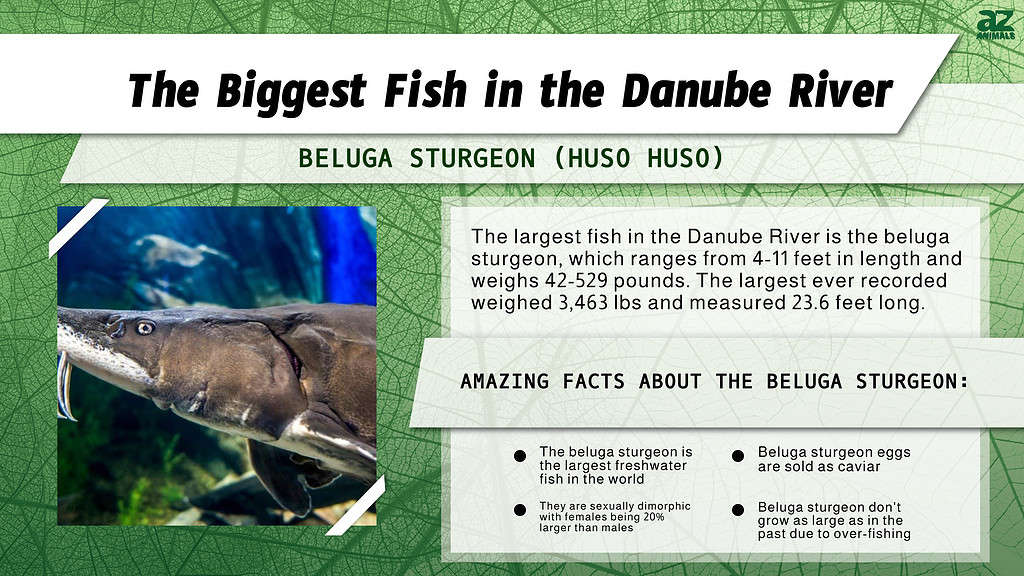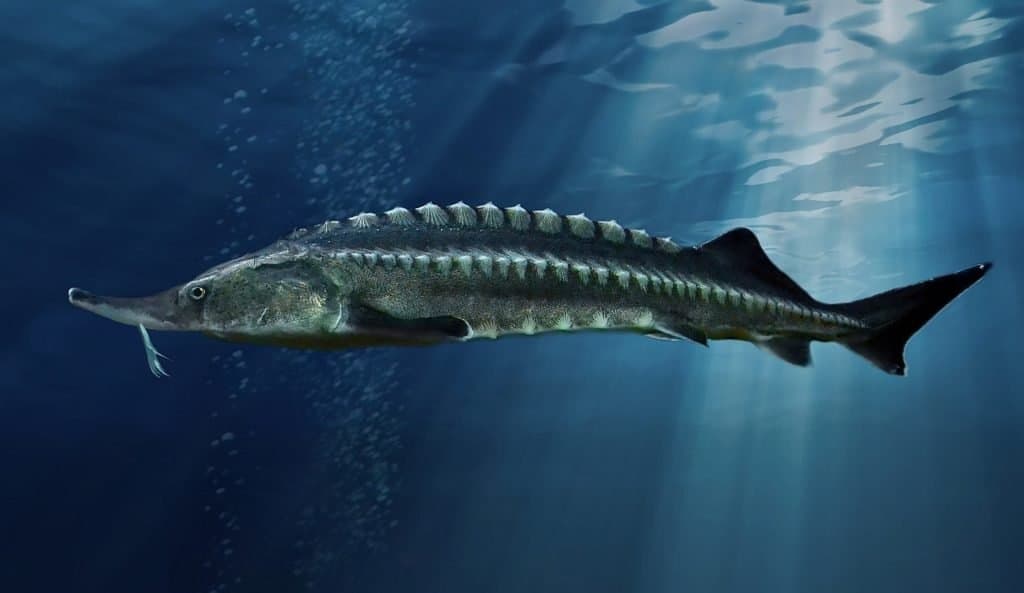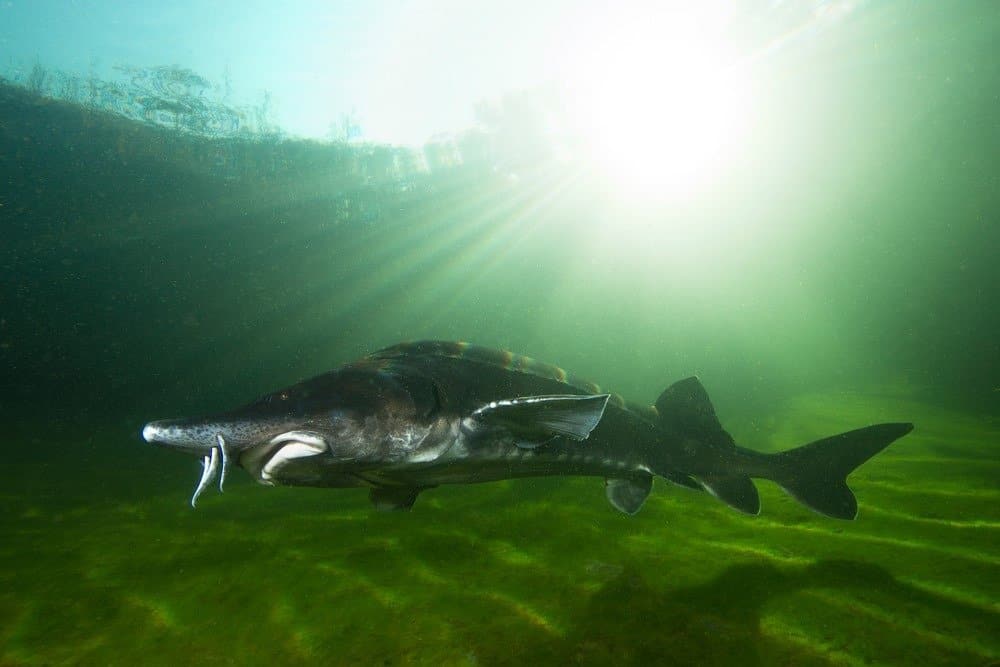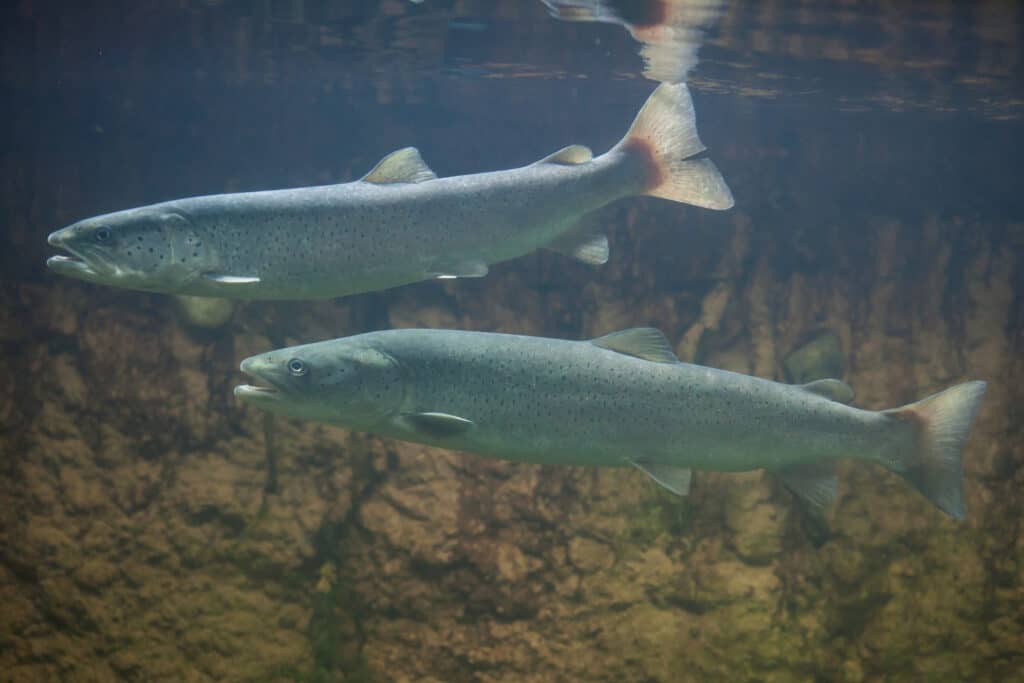The Danube River is the second longest river in Europe and one of the most important cultural and economic features in the regions it flows through. Even more, this river is home to one of the largest freshwater fish to have ever lived. This river monster isn’t just large; its eggs are considered a delicacy to people worldwide. Let’s discover the biggest fish in the Danube River!

Where is the Danube River?

The Danube River is the second-longest river in Europe.
©iStock.com/sorincolac
The Danube River is the second longest river in Europe, traveling for 1,770 miles. It flows through most of Central and Southeastern Europe, beginning in the Black Forest in Germany and ending in the Black Sea north of Turkey. The river is an ancient trade route and is currently an important source of drinking water and hydropower for many countries. Additionally, many of today’s modern borders are settled along the Danube’s shores.
What is the biggest fish in the Danube River?

Beluga sturgeon are generally regarded as the largest freshwater fish in the world.
©Максим Яковлєв / CC BY-SA 4.0 – License
The largest fish in the Danube River is the beluga sturgeon.
The Danube River is home to a fish widely recognized as the largest freshwater fish in the entire world: the beluga sturgeon. Although these fish aren’t as large as they used to be (we’ll get to that later), the largest beluga sturgeon to have ever been recorded was 3,463 lbs and measured 23.6 feet long.
Beluga sturgeon are famous for their size, as well as their eggs (sold as caviar). The beluga sturgeon rivals the size of the ocean sunfish (Mola mola) as the heaviest bony fish and is the second longest bony fish behind the giant oarfish. Outside of the largest recorded individual (caught in Volga estuary), beluga sturgeon can regularly grow between 4 and 11 feet and weigh 42-529 lbs. These fish are sexually dimorphic, with the females being about 20% larger than the males, on average.
The primary reason that beluga sturgeon don’t reach the size that they once did is because of high levels of fishing. Belugas grow throughout their entire lives and can live to over 100, allowing them to reach massive sizes.
What makes the beluga sturgeon special?

Beluga caviar is the most expensive caviar in the world.
©Subbotina Anna/Shutterstock.com
Caviar
Aside from being among the largest freshwater fish in the world, beluga sturgeon are also among the most sought-after fish globally. The reason? Their eggs. Beluga eggs, known as beluga caviar, are the most prized caviar in the world. At peak prices, beluga caviar was fetching nearly $5,000 per pound. Almas, a rare type of caviar taken from albino beluga surgeons between 60 and 100 years old within a certain range near Iran, can fetch up to $70,000 per kilogram.
These extreme prices fuel extremely high fishing levels that are considered unsustainable for the survival of the sturgeon. Although there are methods to extract the caviar without killing the fish, it isn’t always performed. Additionally, the eggs being extracted mean no fish will be spawned from that particular fish. The largest beluga sturgeon can produce 38-40 lbs of roe, while smaller ones can produce around 5 lbs.
Evolution
Sturgeon are among the oldest fish on the planet, with the Beluga sturgeon being among the oldest of all sturgeon. In fact, the beluga sturgeon is so old that it likely co-evolved with the formation of the Danube River, making it the oldest species within the river’s waters. If that isn’t a reason to save this fish, what is?
Beluga sturgeon and a battle for survival

Beluga sturgeon are at risk of extinction.
©Rostislav Stefanek/Shutterstock.com
Due to the extreme value of beluga caviar, these fish are highly sought. Currently, the beluga sturgeon is listed as Critically Endangered by the IUCN and is protected under various conventions. Even more, the United States Fish and Wildlife Services have banned the import of caviar from the Caspian sea since 2005, after placing the animal under the Endangered Species Act. Currently, repopulation efforts are in place to ensure the long-term survival of these ancient fish. In fact, the World Wildlife Fund released 7,000 fish into the Danube River in order to stimulate repopulation efforts. Progress is slow, but more companies and international organizations are aiding in the recovery of these ancient animals.
What other large fish live in the Danube River?

The Danube salmon is among the world’s largest species of freshwater salmon.
©iStock.com/wrangel
Many large fish live in the Danube River, including the Danube salmon (the largest species of freshwater salmon) and six different species of sturgeon. In fact, the portions of the Danube River that flow through Romania and Bulgaria are home to the only viable wild sturgeon populations in the European Union.
The photo featured at the top of this post is © Mick Rush/Shutterstock.com
Sources
- World Wide Fund for Nature, Available here: https://wwf.panda.org/discover/knowledge_hub/where_we_work/black_sea_basin/danube_carpathian/our_solutions/sturgeons/
- Tree Hugger, Available here: https://www.treehugger.com/largest-freshwater-fish-in-the-world-4869287
- LIFE FOR DANUBE STURGEONS, Available here: https://danube-sturgeons.org/sturgeon/beluga-sturgeon/
Thank you for reading! Have some feedback for us? Contact the AZ Animals editorial team.






